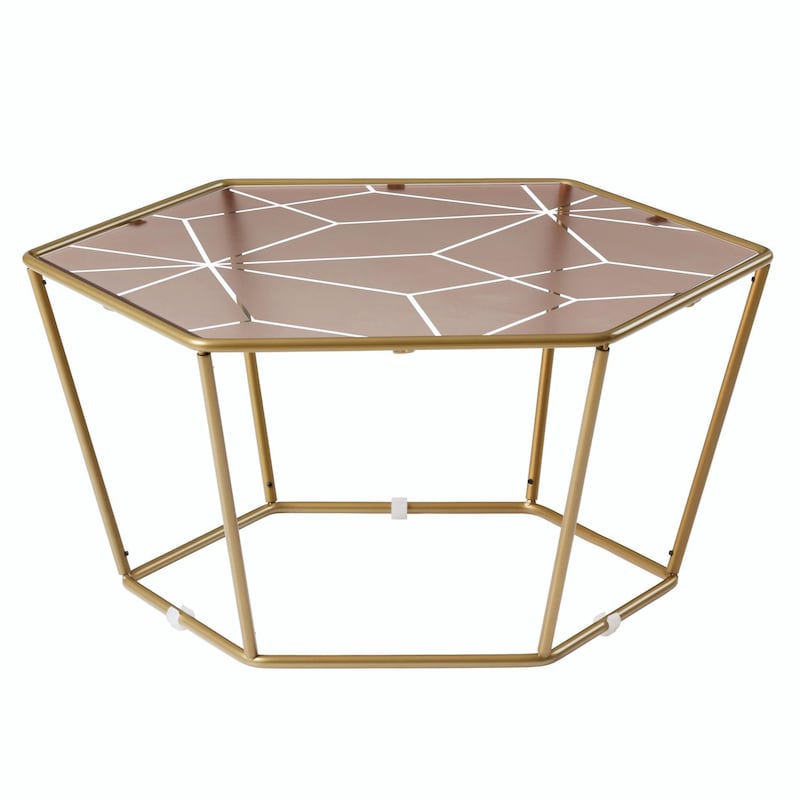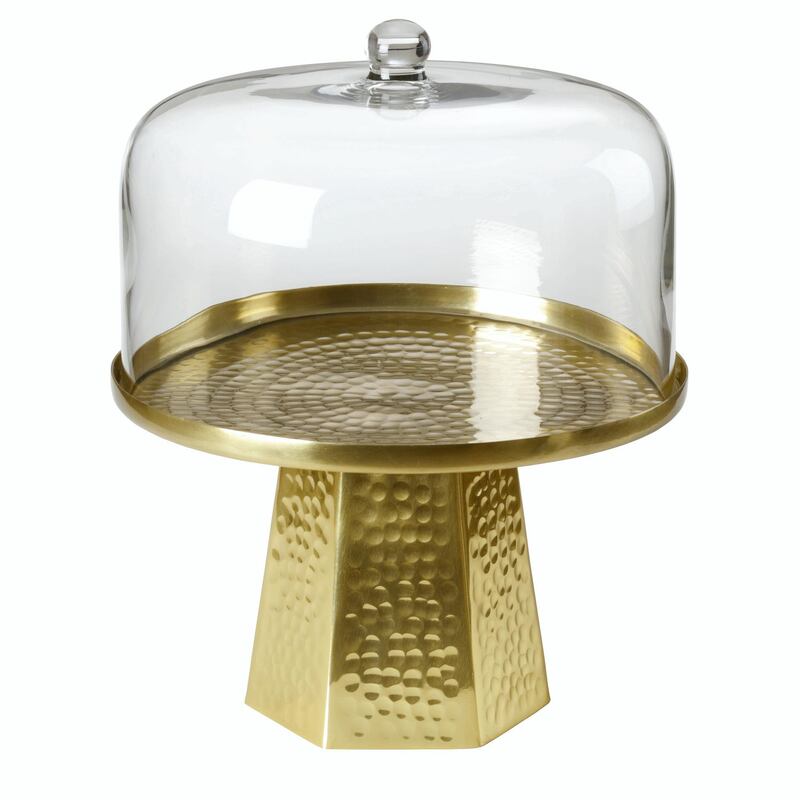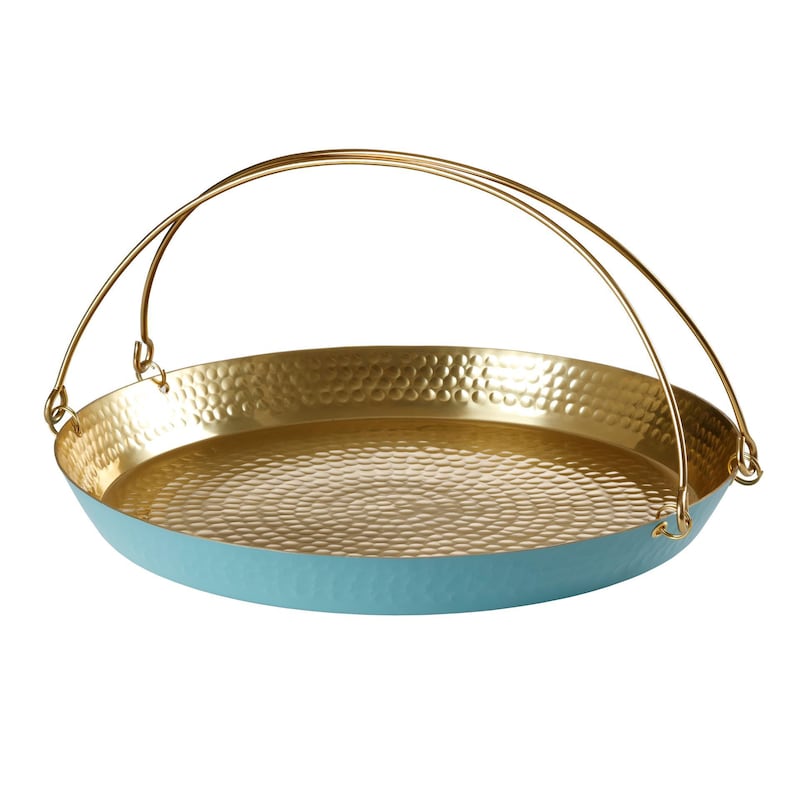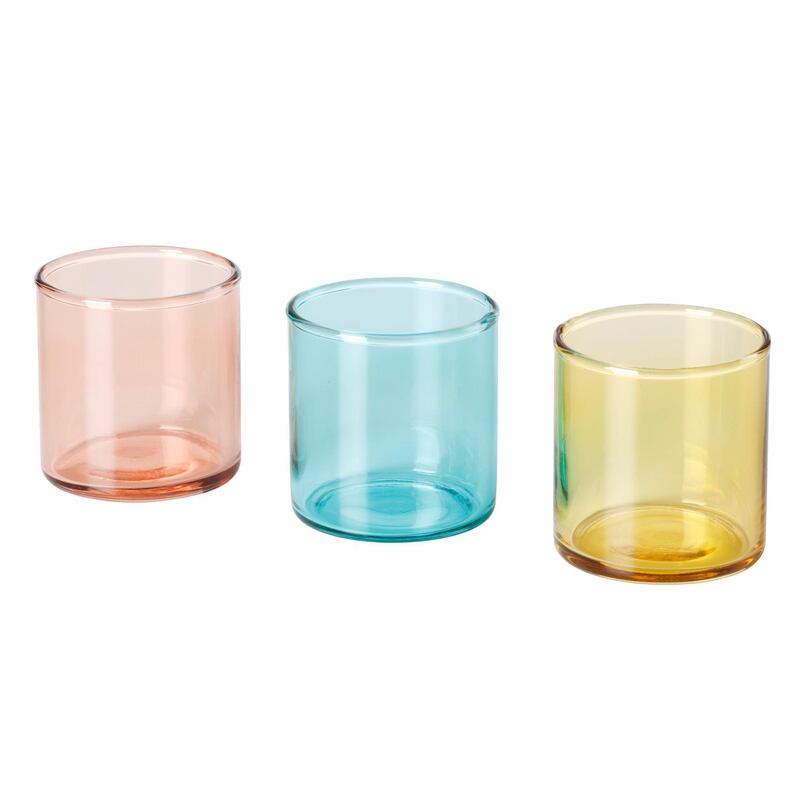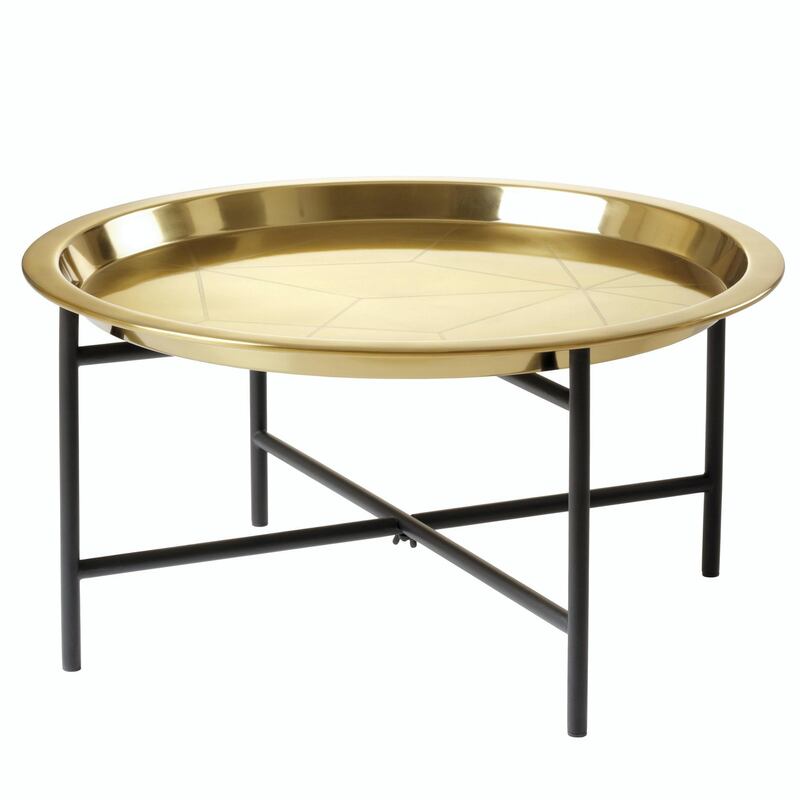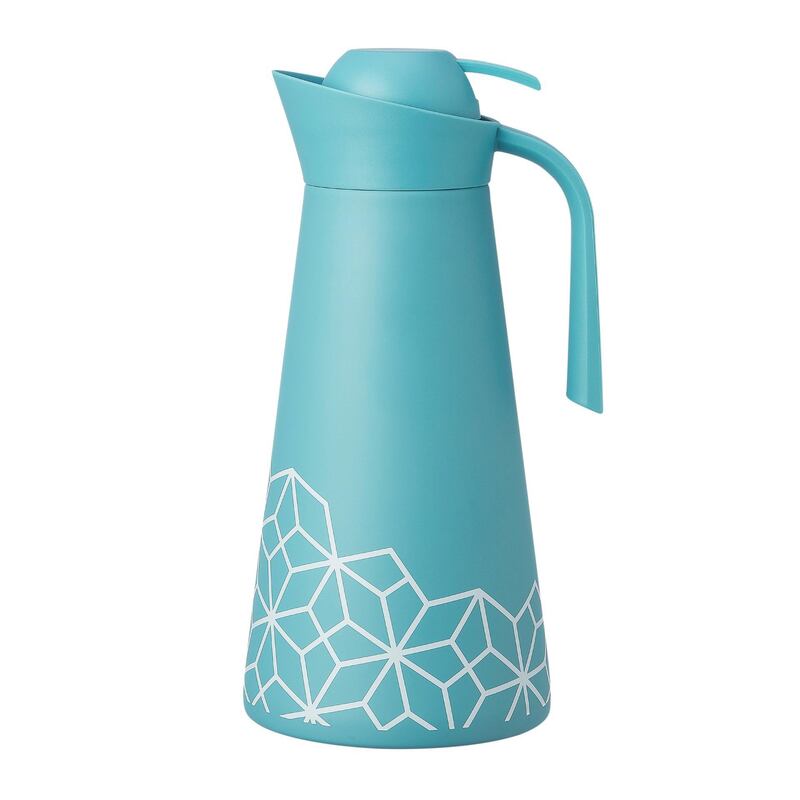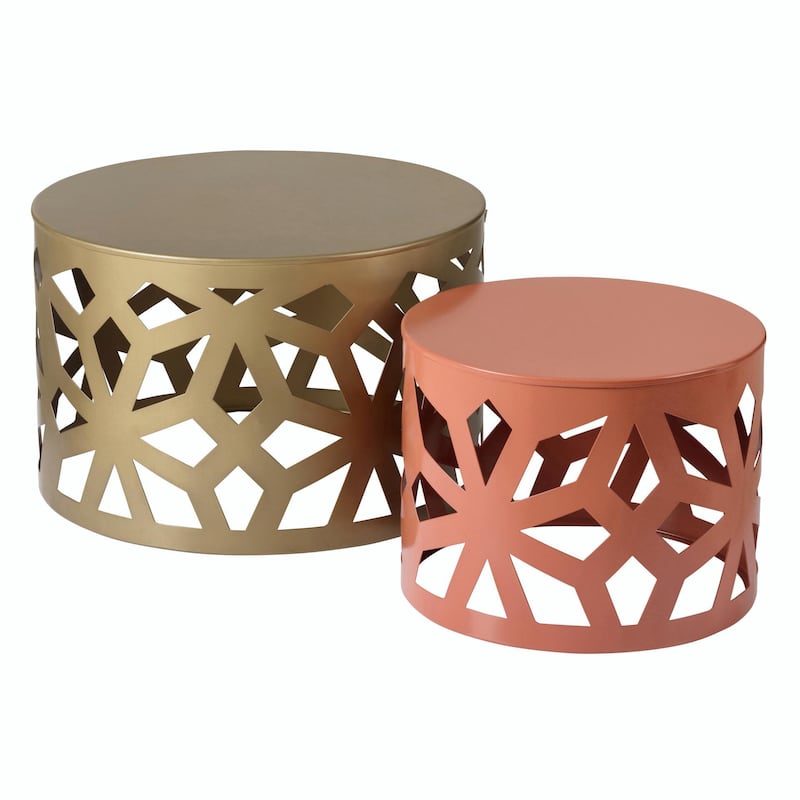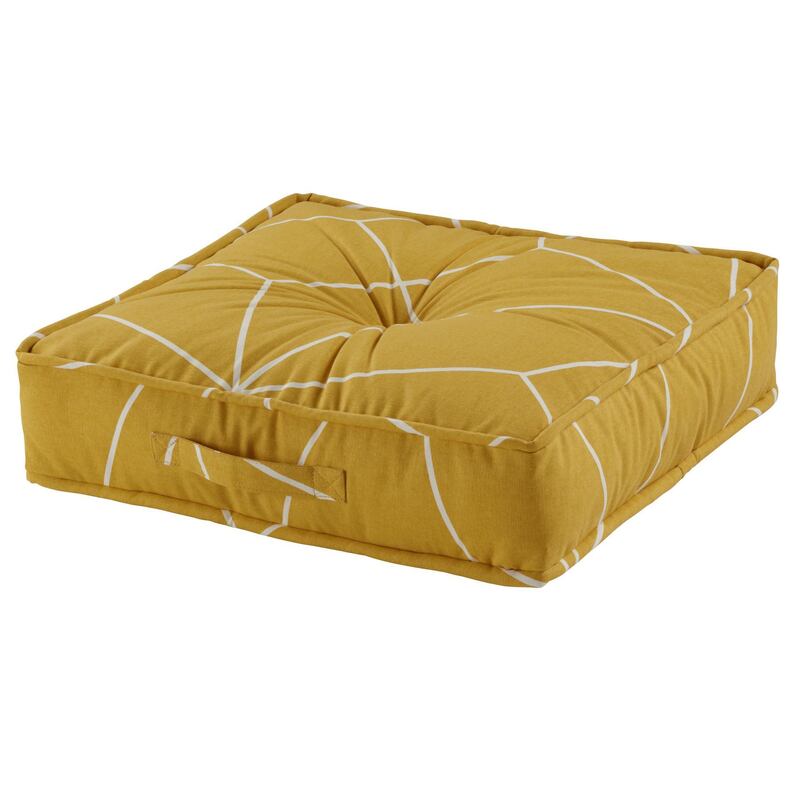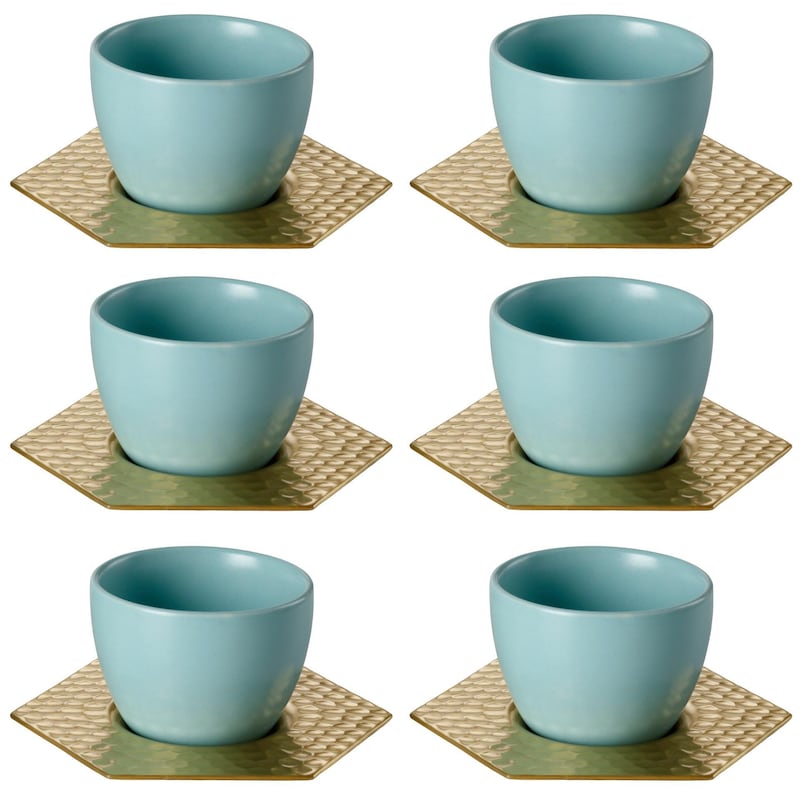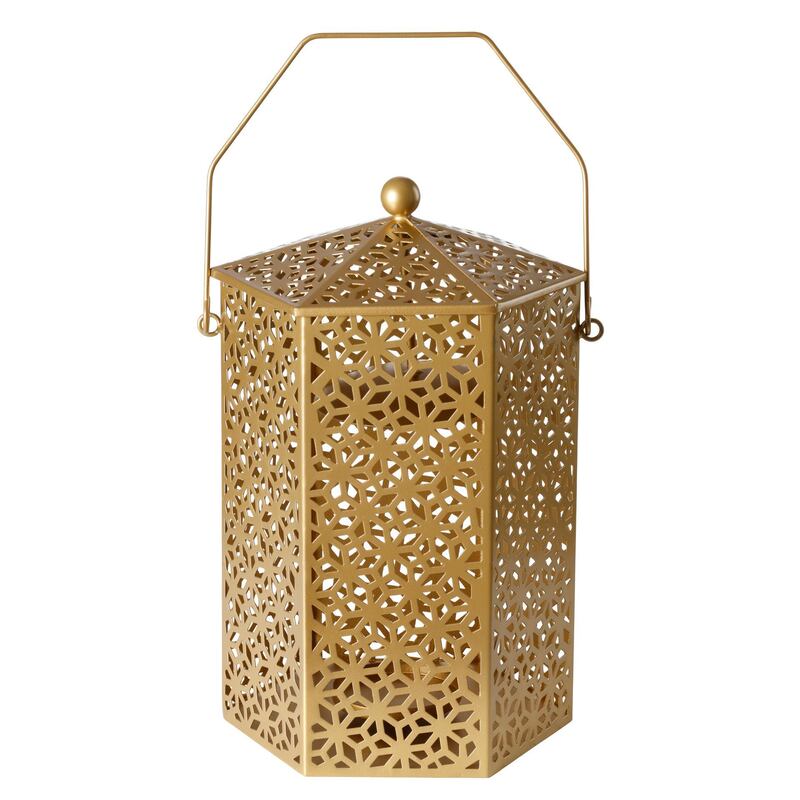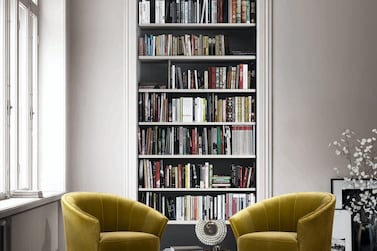Nada Debs's Ramadan 2020 collection for Ikea could have gone one of two ways, the Lebanese designer says; it could have had the moon as the dominating motif or the hexagon. In the end, Debs decided to go with the latter.
The geometric shape, in myriad colours and clusters, is stamped across the tables, trays, cushions, rugs, ceramics and lanterns that make up the new line, called Ljuv, which launches in Ikea stores on Thursday, March 12.
Principles of Islamic design
Ljuv means “delight” in Swedish, and is meant to be a juxtaposition of traditional Middle Eastern symbols and clean Scandinavian design.
"The hexagon is quite a strong geometric shape and it especially stands out in this part of the world," Debs says. "Because when you put the patterns next to each other, they create a continuous, infinite pattern, and that's what Islamic geometry is about – infinity is related to God, to Allah, which is the basis of Islamic design."
Debs is the first Middle Eastern creative to be cherry-picked by the Swedish homeware brand to design one of its collections. "Since we are growing [in] new consumer markets, we need to secure our identity yet embrace trends and traditions to be seasonal and relevant," says Karin Gustavsson, creative leader and range designer at Ikea, Sweden, of the decision to enlist a "globally known" regional designer. "Nada is great fun to work with. She has a modern expression and the knowledge of colours, designs and geometry."
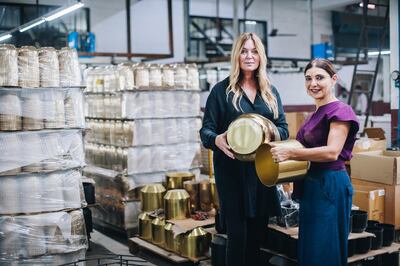
Luxury aesthetic
At Studio Nada Debs, in Beirut, that knowledge usually manifests itself as carefully handcrafted, often exclusive pieces of furniture, decor accessories, carpets and crafts – think Arabesque patterns carved into rich maple and ash wood; mother-of-pearl inlay sweeping across the front of cabinets, or juxtaposed with resin to stunning effect; and buttons shaped like traditional Ma'amoul pastries adorning headboards and sofas. These products firmly lie on the luxury end of the design spectrum. Ikea, on the other hand, is all about the masses and the machines. Debs admits it was a challenging gap to bridge.
"Usually, I start with a craft, and then come up with a technique and create the form of the piece based on the best way to show that craft. In this case, craft was not the main objective, [but] something more industrial that would reach the masses, and follow the principles of democratic design and functionality. It was difficult," Debs says.
"So I would draw a form as if I were creating it for a luxury range, then simplify the materials, colours and techniques. Print instead of inlaid or relief work, and machine sewing instead of hand sewing, for example. I was introduced to an array of techniques – hand-tying, embroidery and so on – that made it look as if a product was handmade, but was actually manufactured using a machine. In the end, the products looked really good, so that was a bit of an eye-opener," she says. "I still believe that when someone works with their hand, it makes a big difference to the end product. But because this collection almost feels handmade and is complemented by Islamic motifs, that gives the pieces a lot of emotion.
"It was also interesting to be able to work on the opposite ends of the spectrum. I think it's nice for a high-end brand to attempt to reach out to everybody. When you stay too exclusive, it loses the whole idea of design which is about creating objects that are functional, and that make people feel better about themselves and who they are. In my case, I work a lot with identities, so reaching out to everyone in the Middle East and Arab world to make them feel we are contemporary but traditional at the same time, and respect our heritage and culture, is the best part of this collaboration for me."
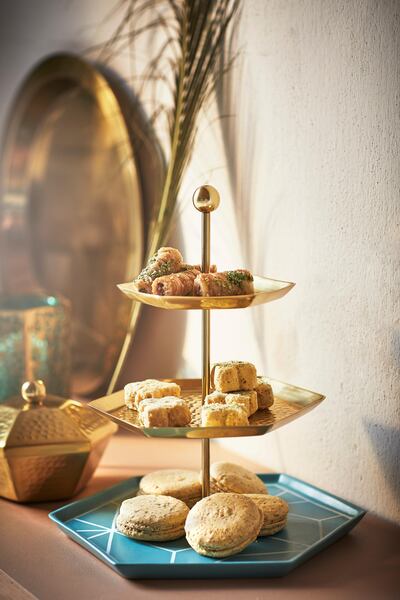
Gustavsson acknowledges the challenges a luxury designer may face when working with a big company with different values. "I love Nada's work; she makes unique pieces and it was a bit of a challenge to adjust some ideas for big-scale production. For example, we have a table in glass and metal that was initially too big for us to ship and sell in one piece. We therefore had to make a construction knock-down. Today it arrives in a flat pack and, with some small assembly, it becomes a full table, sturdy and elegant."
The creation process
For all the industrial sameness the pieces share, Debs says the process from conceptualisation to creation was detailed and exacting. Gustavsson was adamant that design cannot be done from the desktop, and she wanted the Ljuv collection to come together "on the factory floor".
The designer agrees that it was this strategy that lends the collection its coherence. "Once the sketches had been drawn up, it was a process of choosing what works and doesn't. We sent the drawings to the Ikea HQ and then to the factory in India to be produced as prototypes," she says. "I myself spent 10 days in India going through every single piece, to fix proportions and colours, so in the end it turned out to be a very coherent group of objects."
The designer also reveals that the collection enabled her to work with brass for the first time. “I enjoyed exploring this material. You can hammer it, shape it, form it, change its colour … so there is a lot of potential to work with brass, and I hope that I will continue with that.”
The brass side table is a highlight of the collection, and one of Debs’s favourite pieces. Realised in shades of pink and rose gold, the hexagonal shape of the table is further complemented by etchings of the shape on its surface.
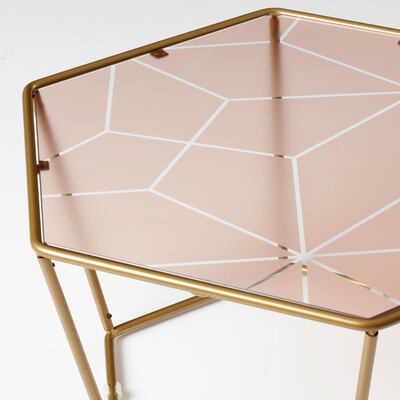
"For the pink glass table, I created a sandblasted effect but left a pattern where it is not sandblasted. The beauty is when the light hits the floor it's placed on, and you will see a play of shadows. The same effect goes for the lanterns as well; I like the idea of playing with light and shadow," the designer says.
"When it comes to colours, we went for bright instead of sober for this collection because it adds a youthful effect and freshness to traditional Islamic shapes," she continues. "We picked up a pattern typically used in the Nada Debs Studio and superimposed it as print, as embroidery and as exaggerated delicate, thin or thick lines, thus playing with pattern on pattern with the hexagonal shape."
Gustavsson says her favourite piece is the ceramic dinnerware, which underscores the purpose of this collection – socialising during the holy month. "I have learnt that during Ramadan, when the sun has set and the fast breaks, it is common for people to gather with family and friends for dinner. The colours and shapes of the ceramics have been designed to make combinations on the dinner table for serving your guests in unexpected ways."
